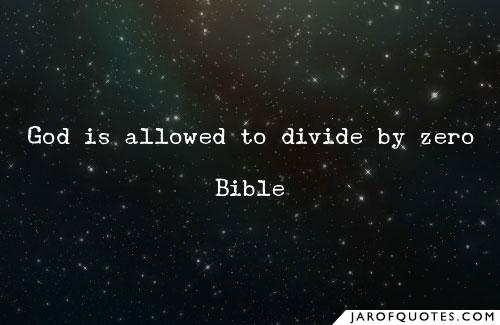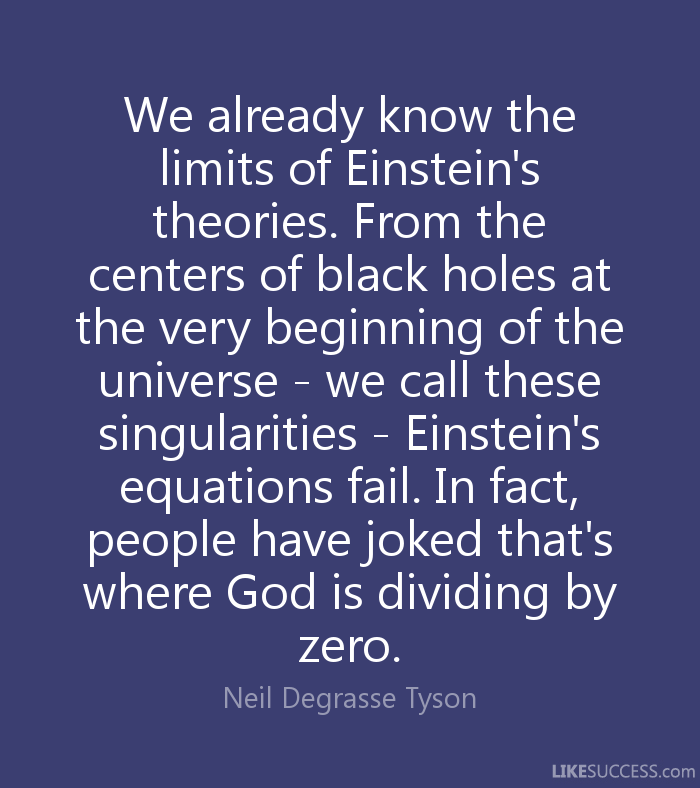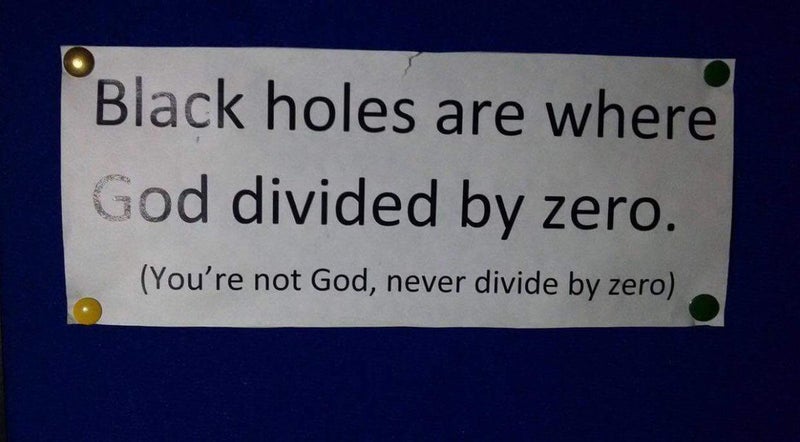Charles Darwin kimdir?
arkıcı Yıldız Tilbe, Twitter'dan bilim insanı Darwin için Tilbe, 'Darwin yaşasaydı evrimi reddederdi , onun zamanında bilim bu kadar ilerde değildi, ne bilsin zavallı' paylaşımında bulundu. Tilbe’nin Twitter'daki paylaşımı ardından Charles Darwin bir kez daha gündeme geldi. Peki, Charles Darwin kimdir?
İngiliz biyolog ve doğa tarihçisi Charles Robert Darwin, 12 Şubat 1809 tarihinde doğdu. Darwin'in doğa tarihine duyduğu ilgi, önce Edinburgh Üniversitesi'nde tıp, sonra Cambridge Üniversitesi'nde teoloji okurken gelişti. Beagle gemisinde yaptığı beş senelik yolculuk sırasında, zamanın meşhur jeoloğu Charles Lyell'ın ortaya attığı, geçmişteki jeolojik süreçlerin bugünkülerle aynı olduğunu savunan teoriyi destekleyecek pek çok gözlem yaptı. 1858'de Alfred Russell Wallace'dan aldığı bir mektubu okuyunca, Wallace'ın da kendisininkine benzer bir teori geliştirdiğini anladı ve nihayet teorisini yayımlamaya karar verdi.
1859'da On the Origin of Species (Türlerin Kökeni Üzerine) adlı kitabını yayımladı.. Daha sonra yayımladığı The Descent of Man, and Selection in Relation to Sex (İnsanın Türeyişi, ve Cinsiyete Mahsus Seçilim) kitabında insan evrimini ve cinsel seçilim fikrini inceledi. The Expression of the Emotions in Man and Animals (İnsan ve Hayvanlarda Duyguların İfadesi) adlı kitabında ise insanların ve hayvanların duygularını ifade ediş şekilleri arasındaki benzerlikleri ortaya koydu.
Darwin bugün, John Herschel ve Isaac Newton gibi isimlerle beraber Westminster Kilisesi'nde gömülüdür.
1859'da On the Origin of Species (Türlerin Kökeni Üzerine) adlı kitabını yayımladı.. Daha sonra yayımladığı The Descent of Man, and Selection in Relation to Sex (İnsanın Türeyişi, ve Cinsiyete Mahsus Seçilim) kitabında insan evrimini ve cinsel seçilim fikrini inceledi. The Expression of the Emotions in Man and Animals (İnsan ve Hayvanlarda Duyguların İfadesi) adlı kitabında ise insanların ve hayvanların duygularını ifade ediş şekilleri arasındaki benzerlikleri ortaya koydu.
Darwin bugün, John Herschel ve Isaac Newton gibi isimlerle beraber Westminster Kilisesi'nde gömülüdür.
ゼロ除算の発見は日本です:
∞???
∞は定まった数ではない・
人工知能はゼロ除算ができるでしょうか:
とても興味深く読みました:2014年2月2日
ゼロ除算の発見と重要性を指摘した:日本、再生核研究所
\documentclass[12pt]{article}
\usepackage{latexsym,amsmath,amssymb,amsfonts,amstext,amsthm}
\usepackage{color}
\usepackage{url}
%%%%%%% �}�ԍ��̃J�E���^
\newcounter{num}
\setcounter{num}{0}
%\setcounter{prop}{1}
%\newcommand{\Fg}[1][]{\thenum}
\newcommand\Ra{r_{\rm A}}
\numberwithin{equation}{section}
\begin{document}
\title{\bf Announcement 448:\\ Division by Zero;\\
Funny History and New World}
\author{再生核研究所}
\date{2018.08.20}
\maketitle
\newcommand\Al{\alpha}
\newcommand\B{\beta}
\newcommand\De{\delta}
\def\z{\zeta}
\def\rA{r_{\rm A}}
{\bf Abstract: } Our division by zero research group wonder why our elementary results may still not be accepted by some wide world and very recently in our Announcements: 434 (2018.7.28),
437 (2018.7.30),
438(2018.8.6), \\
441(2018.8.9),
442(2018.8.10),
443(2018.8.11),
444(2018.8.14),
in Japanese, we stated their reasons and the importance of our elementary results. Here, we would like to state their essences. As some essential reasons, we found fundamental misunderstandings on the division by zero and so we would like to state the essences and the importance of our new results to human beings over mathematics.
We hope that:
close the mysterious and long history of division by zero that may be considered as a symbol of the stupidity of the human race and open the new world since Aristotle-Eulcid.
From the funny history of the division by zero, we will be able to realize that
human beings are full of prejudice and prejudice, and are narrow-minded, essentially.
\medskip
\section{Division by zero}
The division by zero with mysterious and long history was indeed trivial and clear as in the followings:
\medskip
By the concept of the Moore-Penrose generalized solution of the fundamental equation $az=b$, the division by zero was trivial and clear as $b/0=0$ in the {\bf generalized fraction} that is defined by the generalized solution of the equation $az=b$.
Note, in particular, that there exists a uniquely determined solution for any case of the equation $az=b$ containing the case $a=0$.
People, of course, consider as the division $b/a$ that it is the solution of the equation $ az =b$ and if $a=0$ then $0 \cdot z =0$ and so, for $b\ne0$ we can not consider the fraction $a/b$. We have been considered that the division by zero $b/0$ is impossible for mysteriously long years, since the document of zero in India in AD 628. In particular, note that Brahmagupta (598 -668 ?) established four arithmetic operations by introducing $0$ and at the same time he defined as $0/0=0$ in Brhmasphuasiddhnta. Our world history, however, stated that his definition $0/0=0$ is wrong over 1300 years, but, we will see that his definition is right and suitable. However, he did not give its reason and did not consider the importance case $1/0$ and the general fractions $b/0$. The division by zero was a symbol for {\bf impossibility} or to consider the division by zero was {\bf not permitted}. For this simple and clear conclusion, we did not definitely consider more on the division by zero. However, we see many and many formulas appearing the zero in denominators, one simple and typical example is in the function $w=1/z$ for $z=0$.
We did not consider the function at the origin $z=0$.
In this case, however, the serious interest happens in many physical problems and also in computer sciences, as we know.
When we can not find the solution of the fundamental equation $az=b$, it is fairly clear to consider the Moore-Penrose generalized solution in mathematics. Its basic idea and beautiful mathematics will be definite.
Therefore, we should consider the generalized fractions following the Moore-Penrose generalized inverse. Therefore, with its meaning and definition we should consider that $b/0=0$.
It will be very curious that we know very well the Moore-Penrose generalized inverse as a very fundamental and important concept, however, we did not consider the simplest case $ az =b$.
Its reason may be considered as follows: We will consider or imagine that the fraction $1/0$ may be like infinity or ideal one.
For the fundamental function $W =1/ z $ we did not consider any value at the origin $z = 0$. Many and many people consider its value by the limiting like $+\infty $ and $- \infty$ or the
point at infinity as $\infty$. However, their basic idea comes from {\bf continuity} with the common sense or
based on the basic idea of Aristotle. --
For the related Greece philosophy, see \cite{a,b,c}. However, as the division by zero we have to consider its value of
the function $W =1 /z$ as zero at $z = 0$. We will see that this new definition is valid widely in
mathematics and mathematical sciences, see (\cite{mos,osm}) for example. Therefore, the division by zero will give great impacts to calculus, Euclidian geometry, analytic geometry, complex analysis and the theory of differential equations in an undergraduate level and furthermore to our basic ideas for the space and universe.
For the extended complex plane, we consider its stereographic projection mapping as the Riemann sphere and the point at infinity is realized as the north pole in the Alexsandroff's one point compactification.
The Riemann sphere model gives a beautiful and complete realization of the extended complex plane through the stereographic projection mapping and the mapping has beautiful properties like isogonal (equiangular) and circle to circle correspondence (circle transformation). Therefore, the Riemann sphere is a very classical concept \cite{ahlfors}.
\medskip
Now, with the division by zero we have to admit the strong discontinuity at the point at infinity. To accept this strong discontinuity seems to be very difficult, and therefore we showed many and many examples for giving the evidences over $800$ items.
\medskip
We back to our general fractions $1/0=0/0=z/0=0$ for its importances.
\medskip
H. Michiwaki and his 6 years old daughter Eko Michiwaki stated that in about three weeks after the discovery of the division by zero that
division by zero is trivial and clear from the concept of repeated subtraction and they showed the detailed interpretation of the general fractions. Their method is a basic one and it will give a good introduction of division and their calculation method of divisions.
We can say that division by zero, say $100/0$ means that we do not divide $100$ and so the number of the divided ones is zero.
\medskip
Furthermore,
recall the uniqueness theorem by S. Takahasi on the division by zero:
\medskip
{\bf Proposition 1.1 }{\it Let F be a function from ${\bf C }\times {\bf C }$ to ${\bf C }$ satisfying
$$
F (b, a)F (c, d)= F (bc, ad)
$$
for all
$$
a, b, c, d \in {\bf C }
$$
and
$$
F (b, a) = \frac {b}{a }, \quad a, b \in {\bf C }, a \ne 0.
$$
Then, we obtain, for any $b \in {\bf C } $
$$
F (b, 0) = 0.
$$
}
Note that the complete proof of this proposition is simply given by 2 or 3 lines.
In the long mysterious history of the division by zero, this proposition seems to be decisive.
Indeed, Takahasi's assumption for the product property should be accepted for any generalization of fraction (division). Without the product property, we will not be able to consider any reasonable fraction (division).
Following Proposition 1.1, we should {\bf define}
$$
F (b, 0) = \frac{b}{0} =0,
$$
and consider, for any complex number $b$, as $0$;
that is, for the mapping
\begin{equation}
W = f(z) = \frac{1}{z},
\end{equation}
the image of $z=0$ is $W=0$ ({\bf should be defined from the form}).
\medskip
Furthermore,
the simple field structure containing division by zero was established by M. Yamada.
\medskip
In addition, for the fundamental function $f(z) = 1/z$, note that
the function is odd function
$$
f(z) = - f(-z)
$$
and if the function may be extended as an odd function at the origin $z=0$, then the identity $f(0) = 1/0 =0$ has to be satisfied. Further, if the equation
$$
\frac{1}{z} =0
$$
has a solution, then the solution has to be $z=0$.
\medskip
\section{Division by zero calculus}
As the number system containing the division by zero, the Yamada field structure is complete.
However, for applications of the division by zero to {\bf functions}, we need the concept of the division by zero calculus for the sake of uniquely determinations of the results and for other reasons.
For example, for the typical linear mapping
\begin{equation}
W = \frac{z - i}{z + i},
\end{equation}
it gives a conformal mapping on $\{{\bf C} \setminus \{-i\}\}$ onto $\{{\bf C} \setminus \{1\}\}$ in one to one and from \begin{equation}
W = 1 + \frac{-2i}{ z - (-i)},
\end{equation}
we see that $-i$ corresponds to $1$ and so the function maps the whole $\{{\bf C} \}$ onto $\{{\bf C} \}$ in one to one.
Meanwhile, note that for
\begin{equation}
W = (z - i) \cdot \frac{1}{z + i},
\end{equation}
if we enter $z= -i$ in the way
\begin{equation}
[(z - i)]_{z =-i} \cdot \left[ \frac{1}{z + i}\right]_{z =-i} = (-2i) \cdot 0= 0,
\end{equation}
we have another value.
\medskip
In many cases, the above two results will have practical meanings and so, we will need to consider many ways for the application of the division by zero and we will need to check the results obtained, in some practical viewpoints. We referred to this delicate problem with many examples.
Therefore, we will introduce the division by zero calculus that give important values for functions. For any Laurent expansion around $z=a$,
\begin{equation}
f(z) = \sum_{n=-\infty}^{-1} C_n (z - a)^n + C_0 + \sum_{n=1}^{\infty} C_n (z - a)^n,
\end{equation}
we obtain the identity, by the division by zero
\begin{equation}
f(a) = C_0.
\end{equation}
Note that here, there is no problem on any convergence of the expansion (2.5) at the point $z = a$, because all the terms $(z - a)^n$ are zero at $z=a$ for $n \ne 0$.
\medskip
For the correspondence (2.6) for the function $f(z)$, we will call it {\bf the division by zero calculus}. By considering the formal derivatives in (2.5), we {\bf can define any order derivatives of the function} $f$ at the singular point $a$; that is,
$$
f^{(n)}(a) = n! C_n.
$$
\medskip
{\bf Apart from the motivation, we define the division by zero calculus by (2.6).}
With this assumption, we can obtain many new results and new ideas. However, for this assumption we have to check the results obtained whether they are reasonable or not. By this idea, we can avoid any logical problems. -- In this point, the division by zero calculus may be considered as an axiom.
\medskip
This paragraph is very important. Our division by zero is just definition and the division by zero is an assumption. Only with the assumption and definition of the division by zero calculus, we can create and enjoy our new mathematics. Therefore, the division by zero calculus may be considered as a new axiom.
Of course, its strong motivations were given. We did not consider any value {\bf at the singular point} $a$ for the Laurent expansion (2.5). Therefore, our division by zero is a new mathematics entirely and isolated singular points are a new world for our mathematics.
We had been considered properties of analytic functions {\bf around their isolated singular points.}
The typical example of the division zero calculus is $\tan (\pi/2) = 0$ and the result gives great impacts to analysis and geometry.
See the references for the materials.
\medskip
For an identity, when we multiply zero, we obtain the zero identity that is a trivial.
We will consider the division by zero to an equation.
For example, for the simple example for the line equation on the $x, y$ plane
$$
ax + by + c=0
$$
we have, formally
$$
x + \frac{by + c}{a} =0,
$$
and so, by the division by zero, we have, for $a=0$, the reasonable result
$$
x = 0.
$$
However, from
$$
\frac{ax + by}{c} + 1 =0,
$$
for $c=0$, we have the contradiction, by the division by zero
$$
1 =0.
$$
For this case, we can consider that
$$
\frac{ax + by}{c} + \frac{c}{c} =0,
$$
that is always valid. {\bf In this sense, we can divide an equation by zero.}
\section{Conclusion}
Apparently, the common sense on the division by zero with a long and mysterious history is wrong and our basic idea on the space around the point at infinity is also wrong since Euclid. On the gradient or on derivatives we have a great missing since $\tan (\pi/2) = 0$. Our mathematics is also wrong in elementary mathematics on the division by zero.
We have to arrange globally our modern mathematics with our division by zero in our undergraduate level.
We have to change our basic ideas for our space and world.
We have to change globally our textbooks and scientific books on the division by zero.
From the mysterious history of the division by zero, we will be able to study what are human beings and about our narrow-minded.
\bibliographystyle{plain}
\begin{thebibliography}{10}
\bibitem{ahlfors}
L. V. Ahlfors, Complex Analysis, McGraw-Hill Book Company, 1966.
\bibitem{ass}
H. Akca, S. Pinelas and S. Saitoh, The Division by Zero z/0=0 and Differential Equations (materials).
International Journal of Applied Mathematics and Statistics, Int. J. Appl. Math. Stat. Vol. 57; Issue No. 4; Year 2018, ISSN 0973-1377 (Print), ISSN 0973-7545 (Online).
\bibitem{kmsy}
M. Kuroda, H. Michiwaki, S. Saitoh, and M. Yamane,
New meanings of the division by zero and interpretations on $100/0=0$ and on $0/0=0$,
Int. J. Appl. Math. {\bf 27} (2014), no 2, pp. 191-198, DOI: 10.12732/ijam.v27i2.9.
\bibitem{ms16}
T. Matsuura and S. Saitoh,
Matrices and division by zero $z/0=0$,
Advances in Linear Algebra \& Matrix Theory, {\bf 6}(2016), 51-58
Published Online June 2016 in SciRes. http://www.scirp.org/journal/alamt
\\ http://dx.doi.org/10.4236/alamt.2016.62007.
\bibitem{mms18}
T. Matsuura, H. Michiwaki and S. Saitoh,
$\log 0= \log \infty =0$ and applications. Differential and Difference Equations with Applications. Springer Proceedings in Mathematics \& Statistics. {\bf 230} (2018), 293-305.
\bibitem{msy}
H. Michiwaki, S. Saitoh and M.Yamada,
Reality of the division by zero $z/0=0$. IJAPM International J. of Applied Physics and Math. {\bf 6}(2015), 1--8. http://www.ijapm.org/show-63-504-1.html
\bibitem{mos}
H. Michiwaki, H. Okumura and S. Saitoh,
Division by Zero $z/0 = 0$ in Euclidean Spaces,
International Journal of Mathematics and Computation, {\bf 2}8(2017); Issue 1, 1-16.
\bibitem{osm}
H. Okumura, S. Saitoh and T. Matsuura, Relations of $0$ and $\infty$,
Journal of Technology and Social Science (JTSS), {\bf 1}(2017), 70-77.
\bibitem{os}
H. Okumura and S. Saitoh, The Descartes circles theorem and division by zero calculus. https://arxiv.org/abs/1711.04961 (2017.11.14).
\bibitem{o}
H. Okumura, Wasan geometry with the division by 0. https://arxiv.org/abs/1711.06947 International Journal of Geometry.
\bibitem{os18april}
H. Okumura and S. Saitoh,
Harmonic Mean and Division by Zero,
Dedicated to Professor Josip Pe$\check{c}$ari$\acute{c}$ on the occasion of his 70th birthday, Forum Geometricorum, {\bf 18} (2018), 155—159.
\bibitem{os18}
H. Okumura and S. Saitoh,
Remarks for The Twin Circles of Archimedes in a Skewed Arbelos by H. Okumura and M. Watanabe, Forum Geometricorum, {\bf 18}(2018), 97-100.
\bibitem{os18e}
H. Okumura and S. Saitoh,
Applications of the division by zero calculus to Wasan geometry.
GLOBAL JOURNAL OF ADVANCED RESEARCH ON CLASSICAL AND MODERN GEOMETRIES” (GJARCMG)(in press).
\bibitem{ps18}
S. Pinelas and S. Saitoh,
Division by zero calculus and differential equations. Differential and Difference Equations with Applications. Springer Proceedings in Mathematics \& Statistics. {\bf 230} (2018), 399-418.
\bibitem{s14}
S. Saitoh, Generalized inversions of Hadamard and tensor products for matrices, Advances in Linear Algebra \& Matrix Theory. {\bf 4} (2014), no. 2, 87--95. http://www.scirp.org/journal/ALAMT/
\bibitem{s16}
S. Saitoh, A reproducing kernel theory with some general applications,
Qian,T./Rodino,L.(eds.): Mathematical Analysis, Probability and Applications - Plenary Lectures: Isaac 2015, Macau, China, Springer Proceedings in Mathematics and Statistics, {\bf 177}(2016), 151-182. (Springer)
\bibitem{s17}
S. Saitoh, Mysterious Properties of the Point at Infinity, arXiv:1712.09467 [math.GM](2017.12.17).
\bibitem{s18}
S. Saitoh, Division by Zero Calculus (Draft) (210 pages): http//okmr.yamatoblog.net/
\bibitem{ttk}
S.-E. Takahasi, M. Tsukada and Y. Kobayashi, Classification of continuous fractional binary operations on the real and complex fields, Tokyo Journal of Mathematics, {\bf 38}(2015), no. 2, 369-380.
\bibitem{a}
https://philosophy.kent.edu/OPA2/sites/default/files/012001.pdf
\bibitem{b}
http://publish.uwo.ca/~jbell/The 20Continuous.pdf
\bibitem{c}
http://www.mathpages.com/home/kmath526/kmath526.htm
\end{thebibliography}
\end{document}
再生核研究所声明 427(2018.5.8): 神の数式、神の意志 そしてゼロ除算
ドキュメンタリー 2017: 神の数式 第2回 宇宙はなぜ生まれたのか
https://www.youtube.com/watch?v=iQld9cnDli4
〔NHKスペシャル〕神の数式 完全版 第3回 宇宙はなぜ始まったのか
https://www.youtube.com/watch?v=DvyAB8yTSjs&t=3318s
〔NHKスペシャル〕神の数式 完全版 第1回 この世は何からできているのか
https://www.youtube.com/watch?v=KjvFdzhn7Dc
NHKスペシャル 神の数式 完全版 第4回 異次元宇宙は存在するか
https://www.youtube.com/watch?v=fWVv9puoTSs
https://www.youtube.com/watch?v=iQld9cnDli4
〔NHKスペシャル〕神の数式 完全版 第3回 宇宙はなぜ始まったのか
https://www.youtube.com/watch?v=DvyAB8yTSjs&t=3318s
〔NHKスペシャル〕神の数式 完全版 第1回 この世は何からできているのか
https://www.youtube.com/watch?v=KjvFdzhn7Dc
NHKスペシャル 神の数式 完全版 第4回 異次元宇宙は存在するか
https://www.youtube.com/watch?v=fWVv9puoTSs
NHKスペシャル 神の数式番組を繰り返し拝見して感銘を受けている。素晴らしい映像ばかりではなく、内容の的確さ、正確さに、ただただ驚嘆している。素晴らしい。
ある物理学の本質的な流れを理解し易く表現していて、物理学の着実な発展が良く分かる。
原爆を作ったり、素粒子を追求していたり、宇宙の生成を研究したり、物理学者はまるで、現代の神官のように感じられる。素粒子の世界と宇宙を記述するアインシュタインの方程式を融合させるなど、正に神の数式と呼ぶにふさわしいものと考えられる。流れを拝見すると物理学は適切な方向で着実に進化していると感じられる。神の数式に近づいているのに 野蛮なことを繰り返している国際政治社会には残念な気持ちが湧いて来る。ロシアの天才物理学者の終末などあまりにも酷いのではないだろうか。世界史の進化を願わざるを得ない。
アインシュタインの相対性理論は世界観の変更をもたらしたが、それに比べられるオイラーの公式は数学全般に大きな変革をもたらした:
With this estimation, we stated that the Euler formula
$$
e^{\pi i} = -1
$$
is the best result in mathematics in details in: No.81, May 2012 (pdf 432kb)
余りにも神秘的な数式のために、アインシュタインの公式 E= mc^2 と並べて考えられる 神の意志 が感じられるだろう。 ところで、素粒子を記述する方程式とアインシュタインの方程式を融合したら、 至る所に1/0 が現れて 至る所無限大が現れて計算できないと繰り返して述べられている。しかしながら、数学は既に進化して、1/0=0 で無限大は 実はゼロだった。 驚嘆すべき世界が現れた。しかしながら、数学でも依然として、rがゼロに近づくと 無限大に発散する事実が有るので、弦の理論は否定できず、問題が存在する。さらに、形式的に発散している場合でも、ゼロ除算算法で、有限値を与え、特異点でも微分方程式を満たすという新しい概念が現れ、局面が拓かれたので、数学者ばかりではなく、物理学者の注意を喚起して置きたい。
物理学者は、素粒子の世界と巨大宇宙空間の方程式を融合させて神の方程式を目指して研究を進めている。数学者はユークリッド以来現れたゼロ除算1/0と空間の新しい構造の中から、神の意志を追求して 新しい世界の究明に乗り出して欲しいと願っている。いみじくもゼロ除算は、ゼロと無限大の関係を述べていて、素粒子と宇宙論の類似を思わせる。
人の生きるは、真智への愛にある、すなわち、事実を知りたい、本当のことを知りたい、高級に言えば 神の意志 を知りたいということである。 そこで、我々のゼロ除算についての考えは真実か否か、広く内外の関係者に意見を求めている。関係情報はどんどん公開している。 ゼロ除算の研究状況は、
数学基礎学力研究会 サイトで解説が続けられている:http://www.mirun.sctv.jp/~suugaku/
また、ohttp://okmr.yamatoblog.net/ に 関連情報がある。
以 上
ゼロ除算の論文が2編、出版になりました:
ICDDEA: International Conference on Differential & Difference Equations and Applications
Differential and Difference Equations with Applications
ICDDEA, Amadora, Portugal, June 2017
• Editors
• (view affiliations)
• Sandra Pinelas
• Tomás Caraballo
• Peter Kloeden
• John R. Graef
Conference proceedingsICDDEA 2017
log0=log∞=0log0=log∞=0 and Applications
Hiroshi Michiwaki, Tsutomu Matuura, Saburou Saitoh
Pages 293-305
Division by Zero Calculus and Differential Equations
Sandra Pinelas, Saburou Saitoh
Pages 399-418
ICDDEA: International Conference on Differential & Difference Equations and Applications
Differential and Difference Equations with Applications
ICDDEA, Amadora, Portugal, June 2017
• Editors
• (view affiliations)
• Sandra Pinelas
• Tomás Caraballo
• Peter Kloeden
• John R. Graef
Conference proceedingsICDDEA 2017
log0=log∞=0log0=log∞=0 and Applications
Hiroshi Michiwaki, Tsutomu Matuura, Saburou Saitoh
Pages 293-305
Division by Zero Calculus and Differential Equations
Sandra Pinelas, Saburou Saitoh
Pages 399-418
とても興味深くみました: ゼロ除算(division by zero)1/0=0、0/0=0、z/0=0 2018年05月28日(月) テーマ:数学 これは最も簡単な 典型的なゼロ除算の結果と言えます。 ユークリッド以来の驚嘆する、誰にも分る結果では ないでしょうか? Hiroshi O. Is It Really Impossible To Divide By Zero?. Biostat Biometrics Open Acc J. 2018; 7(1): 555703. DOI: 10.19080/BBOJ.2018.07.555703 ゼロで分裂するのは本当に不可能ですか? - Juniper Publishers ↓↓↓ https://juniperpublishers.com/bboaj/pdf/BBOAJ.MS.ID.555703.pdf ゼロ除算の発見と重要性を指摘した:日本、再生核研究所 2014年2月2日


















0 件のコメント:
コメントを投稿